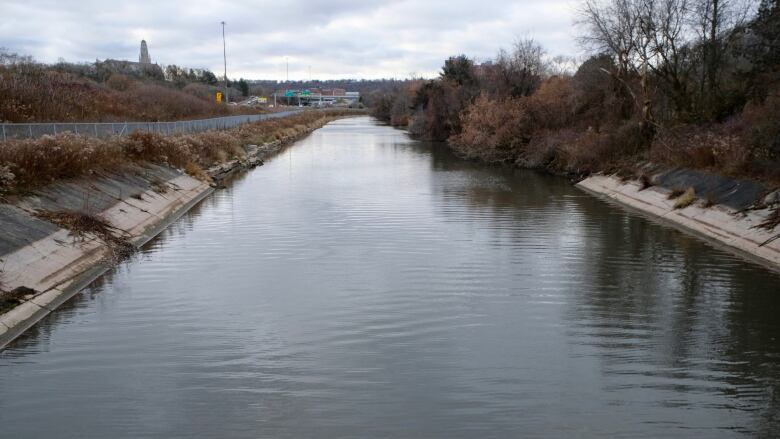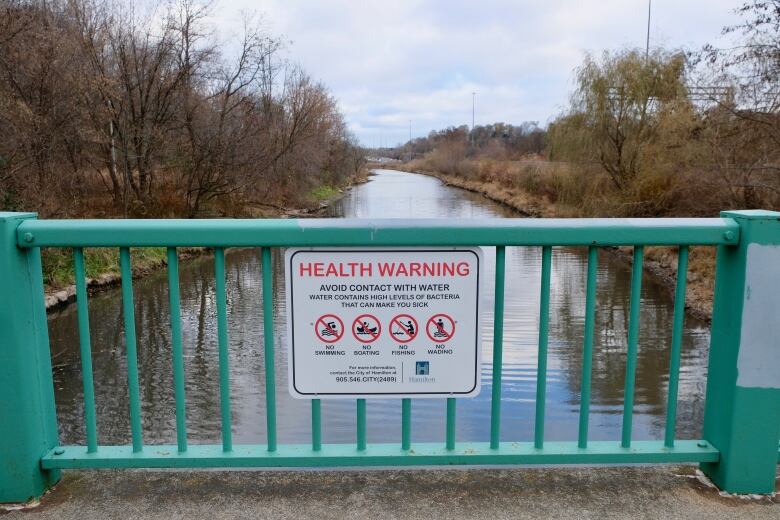City says it will dredge Chedoke Creek following ministry order
Hamilton is also facing provincial charges in connection with the leak

The City of Hamilton says it will dredge Chedoke Creek after being ordered to do so by the Ministry of Environment, following aleak that saw 24 billion litres ofsewage and stormwaterenter the waterwayover four years.
But the province has rejected arequest to extend the timeline forcompletingwork in the waterway.
In a media release, the city says it will be moving ahead with the work outlined in the provincial order, noting it will likely require permits from all levels of government.
"Once permits are obtained, dredging is expected to take several months, weather dependent," it reads.
Tys Theysmeyer, head of natural areas at the Royal Botanical Gardens, said the announcement is"fantastic" news.
"It's the logical outcome of spilling a bunch of raw sewage," he added.
Under the timelines provided by the ministry, the citymust provide a remediation plan by Feb. 22, 2021. The deadline for all remediation to be complete isOct. 31.
The city had asked the province for more time but, while some timelines were extended, the overall time to complete the work remained the same.
City going to go 'gangbusters'
Dan McKinnon, Hamilton's general manager of public works, described the timelineas "optimistic," noting meeting it is possible if everything falls into place.
However, seeking the necessary permits from bodies such as theHamilton Conservation Authority andFisheries and Oceans Canada, could lead to delays that left him "a little nervous."
"All I can say is we're going to go great gangbusters here to try and satisfy the order with every resource that we have," said McKinnon.
The plan to dredge is the latest updatein an already expensive environmental ordeal related to the years-long leak from a combined sewer overflow (CSO) tank.

Starting on Jan. 28, 2014, a gate partially opened on anunderground tank at Main and King streets. The city didn't notice it until 2018. By the time it fixed the issue, 24 billion litres had escaped into Chedoke Creek, which flows into Cootes Paradise and eventually Hamilton Harbour.
The city is facing a charge in connection with the leak followingan investigation by the ministry.
A court summonsdated Dec. 8, 2020 outlines the charges,which are both linked to causing or permitting raw sewage to be discharged.
The ministry previously ordered the city to hire a consultant. SLR Consulting told council that it's hard to know if any long-term environmental damage was done, but said dredging wouldn't help.
The ministry disagreedlast month and issued a new order, saying thecity's "do-nothing approach" was unacceptable.
Mayor Fred Eisenbergerpreviously disagreed with the ministry's characterization.
"We're not at all in a do-thing approach," he said in November, addingthe issue of waste getting into area waterways, he said,is a system-wide problem that's "decades-old."
More than $500K spent already
Dredging"will not be inexpensive," McKinnon warned.
More than $500,000 has already been spent on consultation and cleanup following the spill, according to Andrew Grice, director of Hamilton water.
While it's too early to pin an exact price tag on the work, he said an early estimate of $2 million suggested by one consultant was likely on the "low end."
McKinnon said thedredging tends to be carried out in one of two ways a "glorified vacuum" that sucks up sediment or "clam-shell cranes" that scoop up muck.

The general manager said he suspects Hamilton will end up pursuing the vacuum method in order to limit the impacts of vegetation and other living things around the creek.
"We are headed down a path where we're going to do something that's fairly invasive," said McKinnon.
There are "allkinds of collateral consequences that may occur."
Theysmeyersaid there are some endangered species to work around, including freshwater mussels. The team tasked with the cleanup will also have to avoid sucking up a turtle or any other critters.
In his view the vacuum is the only option.
"Loose sludgy stuff, if you try to scoop it, it just runs out the side of your scoop. You have to do a vacuum. That's all there is."
with files from Samantha Craggs












_(720p).jpg)


 OFFICIAL HD MUSIC VIDEO.jpg)
.jpg)



























































































